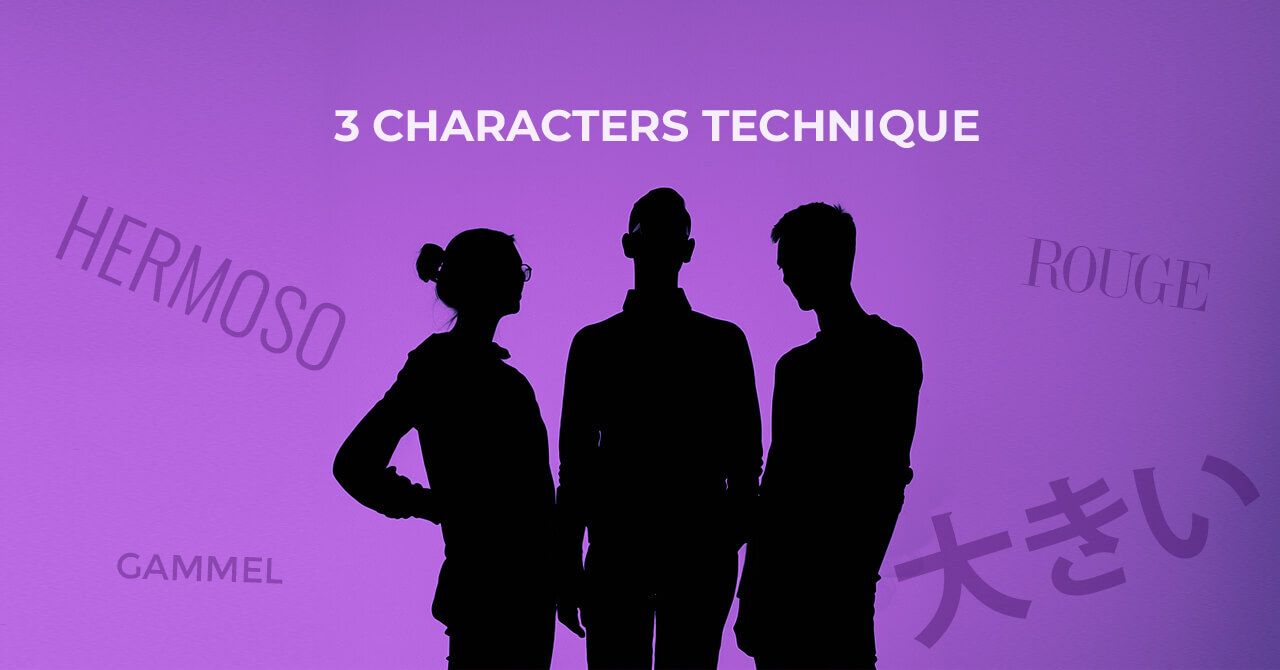
“3 Characters” Technique—A Creative Way to Improve Your Vocabulary
The technique has to do with describing objects in different ways, creating a wordlist, and memorizing new words.
Upper-intermediate students often experience the so-called “plateau effect,” which lessens their motivation and sense of achievement when it comes to learning new words. In this article, I would like to discuss a creative way to memorize new vocabulary—the technique called “3 characters.” This technique is suitable for teenage and adult learners of upper-intermediate level and above.
3 Characters memorizing technique
The technique has to do with describing objects in different ways, creating a wordlist, and memorizing new words. It will definitely be suitable for students who have problems finding synonyms for overused adjectives such as “good,” “interesting,” and “beautiful,” as well as for those preparing for language exams such as IELTS or TOEFL. Learners who struggle to make their language more precise will also find this approach useful.
How to apply the “3 characters” technique
Choose the object
To apply this method, we first need to choose an everyday object, for example, “a book,” or to be more specific, let it be “a book of jokes.” Then, we need to pick 3 characters of different backgrounds and levels of education. The first character is “a 6-year-old boy.” The second character is “an office worker in his twenties.” And finally, the third character is “a linguist” or “a philosopher.”
Describe the chosen object from 3 characters’ perspective
As the students vividly imagine the characters, they are required to describe the chosen object as these characters would do. Needless to say, the words each character is going to use to describe the object and express their attitude toward it will vary greatly. It is crucial to state that each description should contain a completely different set of words. The only vocabulary item learners are allowed to use more than once is the name of the object itself.
The description given by a 6-year-old is where the easiest and the most low-level words are used. We allow students to create the most basic description and make the beginning fun for them as they have to recall their childhood in the process or try to think as their children do. Their first description will probably look like this: “It’s a really funny book with a lot of jokes! You can read jokes about people, animals, and other things. Some jokes are very funny. You laugh so hard that your tummy hurts! I like this book very much.”
The next step is to create a description of the same object that could be provided by an office worker. For instance: “I bought this book at a railway station to read on the way. It was quite an entertaining book, which was perfect for me as I had a stressful day at work and deserved a break. Most jokes are fairly clever. You can meet a couple of weird jokes, though.” The “office worker” is the one most adults are likely to identify themselves with, so it will most probably reflect their current vocabulary range. It will require some effort, however, as the most obvious adjectives have already been said, so the students will have to think about some alternatives such as “entertaining” instead of “funny” or “quite/fairly” rather than their habitual “really.”
The third stage is the description potentially created by a linguist. And that is where most vocabulary learning occurs. At this point, students have most probably run out of synonyms, so they will need to hit the books. A linguist impersonated by an upper-intermediate ESL student will possibly come up with something like this: “The book represents modern humor and linguistic creativity. It is full of puns, wordplay, and metaphors. This satirical book reflects the cultural context and regional nuances. It provides valuable insight into societal norms and deviations from them. At the same time, it offers some cross-cultural jokes that could amuse people of different cultures if translated.” At this point, students have to be more precise with their descriptions and choose the words specifically attributed to the objects, such as “puns,” “wordplay,” “to reflect the cultural context,” etc. Furthermore, they will need to come up with some linking devices that will make the text more structured and suitable for “a linguist.”
Create a list of words
After the students have created their descriptions, making a wordlist of the words they already know and the unknown words is required. Considering the 3 descriptions listed above, we can come up with the following word list:
- funny—entertaining—satirical
- a light read
- a pun
- wordplay
- a metaphor
- cultural context
- a nuance
- cross-cultural
- amuse—amusing
- to reflect
- to provide an insight into, etc.
So, we have created a list of 11 words related to the topic of “humor.” Students are likely to memorize the words far quicker as they look up the new vocabulary in the dictionary and use the lexical items in context instead of having been provided with a ready list of words and repetitive vocabulary exercises.
“3 characters” technique in use
To make the most of this technique, students can create similar descriptions for books of different genres, such as horror books or romantic novels. Then, they will have a substantial wordlist on the topic of books and reading. It goes without saying that objects can vary significantly—they can be pieces of furniture, buildings around town, things to put in your travel bag, etc. Teachers are also able to select different characters based on students’ backgrounds, interests, and needs. For instance, instead of abstract characters, we could have “Dora the Explorer,” Chandler Bing from “Friends,” the TV series, and Sheldon Cooper from the “Big Bang Theory,” or we could just change an office worker to a job the student does.
To sum up, the “3 characters” technique comes in handy when a teacher wants to use a nontraditional approach to learning new words or when students feel overwhelmed by the number of words they have to learn to overcome the upper-intermediate plateau.
As an ESL tutor, I am constantly looking for new approaches to teaching and learning, trying to find new tools that will enhance the learning experience.

